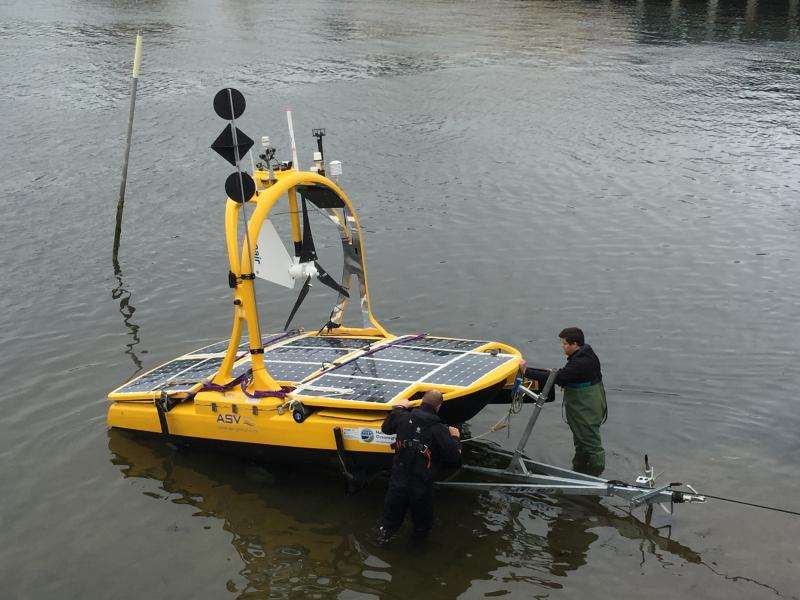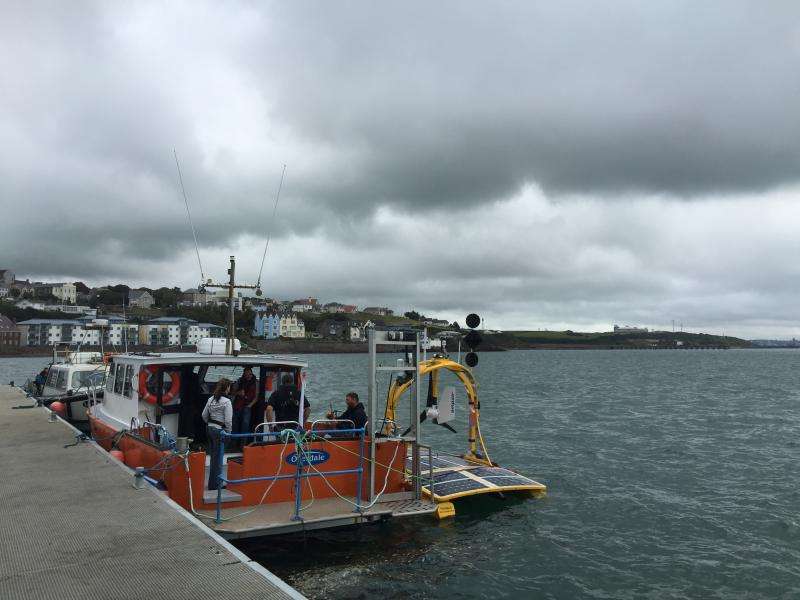The Autonomous Surface Vehicle being launched
Today the National Oceanography Centre (NOC) has launched its robot technology to measure marine wildlife in the Celtic Sea. This is the latest in a series of ambitious marine robotic vehicle trials by the NOC, off the UK coast.
Working in partnership with the World Wildlife Fund (WWF), the NOC has deployed a submarine glider and an Autonomous Surface Vehicle from Milford Haven, in Wales. These two robotic vehicles will now work together over the next three weeks to investigate why the Celtic deep area of the Celtic sea is particularly attractive to marine predators, such as dolphins and seabirds.
The Celtic Sea contains known hotspots for marine animals, including the Fin Whale and the globally threatened Balearic Shearwater. However, greater densities of observations are needed to better understand why these animals are attracted to such 'spots' in the ocean.
The NOC's Prof Russell Wynn, who is co-ordinating the research, said "Marine robotic technologies give us the opportunity to have a persistent presence in the ocean, and are changing the way in which we conduct science in the marine environment.
The two vehicles on this mission are bristling with novel sensors that will act as our eyes and ears in the water, observing and detecting seabirds and marine mammals. The vehicles will also be continuously collecting data about weather conditions at the sea surface, as well as the temperature and salinity of the water column, and the distribution and abundance of plankton and fish prey."
The Autonomous Surface Vehicle being launched
Dr Lyndsey Dodds, Head of Marine Policy at WWF-UK, said "WWF is excited to support this innovative technology in order to get a clearer picture of what's out there in our seas. Only through increased understanding can we can identify what needs to be done to ensure good management and protection."
The Autonomous Surface Vehicle was deployed from Milford Haven, in Wales, at 10am this morning. From there it will travel to the Celtic deep region of the Celtic sea to join the Slocum submarine glider, which was deployed from RRS Discovery on the 10th of August. The Autonomous Surface Vehicle is travelling along the sea surface carrying GoPro cameras and marine mammal acoustic detectors, as well as a state-of-the-art meteorological station. It has the ability to harvest solar and wind energy from the marine environment, and can therefore potentially remain offshore for several months. The vehicle will be piloted from Portchester by ASV, who developed it as part of a government Small Business Research Initiative, co-ordinated by the NOC.
Provided by National Oceanography Centre, Southampton

























